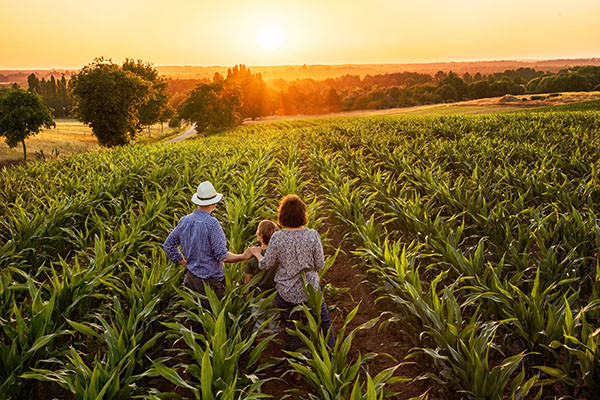BUYING OR REFINANCING FARMLAND? TIPS TO NAVIGATE A BULLISH FARMLAND MARKET
A rising tide lifts all boats, and corn prices that have doubled in the last 18 months are doing the same for other ag market sectors, including farmland values.
Land prices didn’t exactly track the downturn in grain prices in the last eight to nine years. However, now that grain prices are bullish, so is the farmland market. This is fueling some eye-popping five-figure sale prices in places like the Midwest where farmland is a bellwether for other sectors and a leading economic indicator.
As surging grain prices are both good and bad, depending on where you sit in the marketplace, the same is true for land prices. If you’re a buyer right now, it’s tough sledding, whereas if you’re in the market to sell — especially in areas where bidding wars are likely among potential buyers — the bullish trend is a good thing.
Refinancing? Get informed.
Then there are those in between those buyers and sellers who rely on land as an asset for things like operating financing collateral. Making the current bullish farmland market work for you from an asset management standpoint is a balance between smart spending and always being attentive to your general financial standing, financing needs, overall debt obligations and your ability to meet them. Such awareness can help you make the right decisions as it relates to land as a big-ticket asset and how you can make it work best for you.
In a time like today, with surging farmland values and basement-level interest rates, many landowners are pondering refinancing farmland to cut long-term land costs. There are tactical benefits to that process, according to Wamego, Kansas-based Conterra Relationship Manager Luke Schultz. That starts with an appraisal of owned land, whether you want to maximize its value as a leveraged asset or ensure an accurate price basis if you’re selling.
“If you want a better rate, conduct an appraisal. Not only are interest rates low and farmland values increasing, now is the time to get your debt against real estate while appraisals will support it for as long as you can, while you can. Even if you’re not currently paying interest, you can get some cash freed up to expand your land base,” Schultz said. “If you can afford to grow that way — even with the rising tide of the cost of ground — it’s a good time to leverage. If you have a long-term fixed rate, grain prices will cycle several times during the amortization period. You have a long time to recoup any losses when it does cycle lower. Markets will spike and valley several times over the years.”
Become an informed land buyer.
If you are in the market to buy land right now, you’re likely cringing at some of the prices out there. But if you’re able to justify the cost on your balance sheet right now, have adequate cash flow to make the purchase and lock in a low interest rate, there’s a lot of upside to growing your land base despite the leverage necessary to do so in the long-term context. Additionally, it’s important to consider any local farmland market factors like land availability and expected future long-term value trends. Find out what information you need to get a farm real estate loan.
“You have to be smart. If you’re going to overpay for something, you have to be willing to overpay for the one piece of ground that fits your operation the best, whether that’s from a logistics or quality standpoint, or if you think it will never be for sale again, like if it’s been held by the same family for 100 years and going into another one who will do the same,” Schultz said.
Keep these factors in mind when buying land.
Consider the following long-term variables when weighing additional farmland purchases:
- Location/access
- Overall land quality/productivity
- Potential future productivity restrictions, like long-term crop water availability
- Future use and resulting value trend
- Natural resource availability above, on or below the land.
“Think about what will be the best fit for your operation. Buyers should really consider logistics,” Schultz added. “Think about what every piece of ground could have added to it and how the market is likely to change in 15 years if you go to sell it. Is it going to have some new value for something the market’s not paying for now?”
If you’re considering buying or selling land to improve your farm’s overall financial footing or as part of an overall growth strategy, Conterra can help you make sound, well-informed decisions. Get in touch today to start that conversation.

